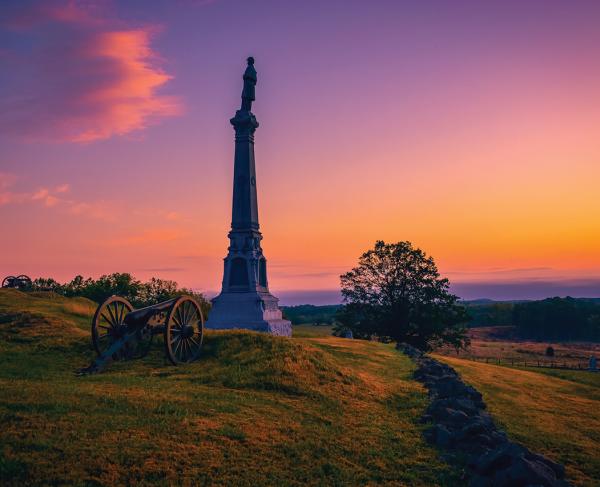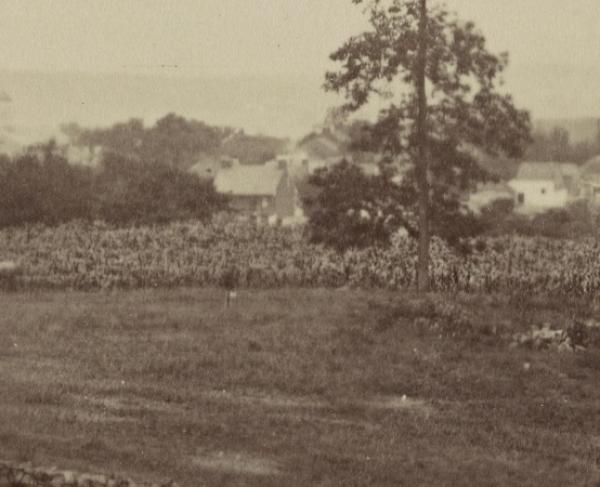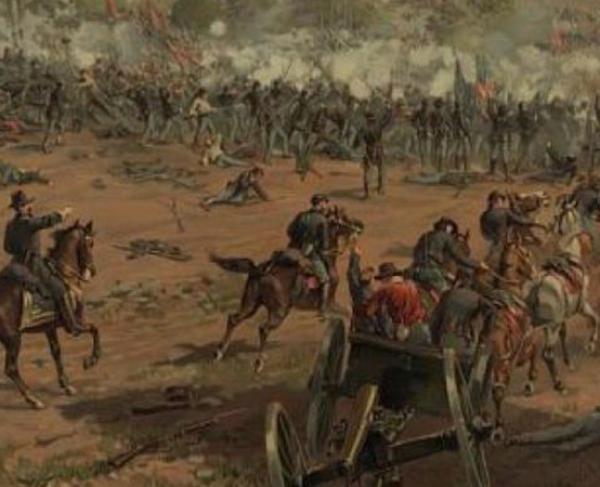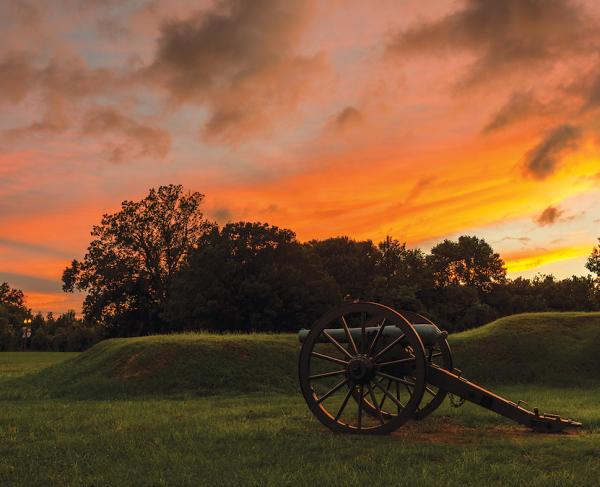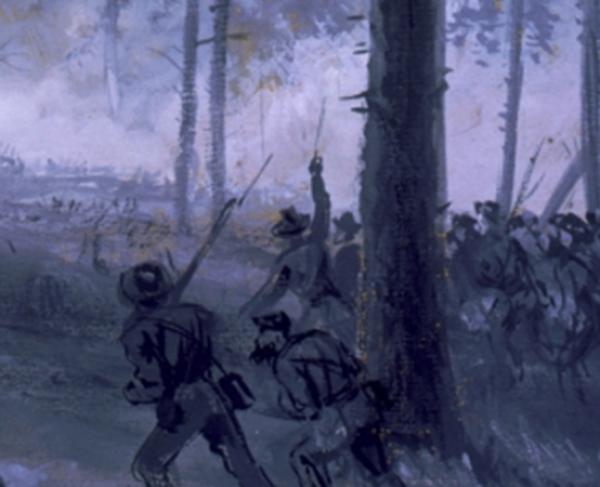Celebrate Victory Week 2024 with us!
Victory Week Continues: Celebrating Crucial Sites Saved at Gettysburg and Beyond!
When the American Battlefield Trust claims “victory,” the term signifies the conclusion of our long and arduous process to save, and often restore, sacred battlefield acreage. From researching and confirming the historic actions that unfolded upon the pinpointed soil, to working closely with landowners on a preservation agreement, to consulting local partner groups and decision makers, to hunting down all possible funding sources and sharing preservation opportunities with essential donors like yourself, these victories are the product of several helping hands.
During its fourth annual Victory Week, which falls squarely within Historic Preservation Month, the Trust outlined the complexities of the “victory” process with its members — but also announced an impressive round-up of recent preservation victories. Composed of 4 battlefields in three states, the 2024 Victory Week declaration covers nearly 40 historic acres protected by the nation’s premier battlefield land preservation organization, including crucial sites in Gettysburg associated with Pickett’s Charge and the first hallowed ground saved at Chickasaw Bayou.
Gettysburg Battlefield, Pa. | Pickett’s Buffet | 1 acre saved
The former site of General Pickett’s Buffet is a little more than a half-acre that overlooks the field of Pickett’s Charge, across which, on July 3, 1863, some 12,000 Confederate soldiers advanced, without cover, toward Cemetery Ridge. During World War I, the area that became restaurant parking was the headquarters of Camp Colt, where American troops trained under a young Dwight David Eisenhower in the emerging art of tank warfare before deploying to Europe; the future president so loved the battlefield and town that he later made Gettysburg his home. The same site eventually became a prisoner of war camp for captured German soldiers during World War II.
With the help of the Gettysburg Foundation, the American Battlefield Protection Program and our generous members and donors, the Trust has completed its purchase of the site. The Trust acquired the land when the restaurant changed hands and moved to a new location south of town. Tour groups now enjoy lunch in the spacious new Barn Restaurant.
As of May 2024, the Trust has saved approximately 1,277 acres at Gettysburg Battlefield.
Explore This Victory
Enlivening America's Most Iconic Battlefield
Gettysburg | Pickett's Charge | July 3, 1863 | 3:30-3:45 pm
Pickett's Charge
Gettysburg Battlefield, Pa. | Military Museum | 4 acres saved
On the slopes of East Cemetery Hill, abutting the Baltimore Pike and sitting just below the crest of the Union artillery position on Stevens Knoll, what is now known as the “Battlefield Military Museum” tract figured prominently in the Battle of Gettysburg. The eminence above it to the east, called McKnight’s Hill, or Stevens Knoll, was among the first tracts preserved at Gettysburg, less than one year after the battle. During the battle, James and Margaret Ann McKnight owned this land, which includes a historic house still extant on the property and a stone wall behind which soldiers fought, bled and died. Tens of thousands of Union troops marched right in front of, and some paused on, passed over, fought on and were buried on McKnight’s property on the first and second days of battle.
With the help of many partners, including the Commonwealth of Pennsylvania, the American Battlefield Protection Program, and the HTR Foundation, the Trust has successfully purchased and saved this tract forever. Per the terms of our acquisition, restoration will occur in phases, some of which may not begin for several years.
As of May 2024, the Trust has saved approximately 1,277 acres at Gettysburg Battlefield.
Explore This Victory
East Cemetery Hill
Gettysburg | East Cemetery Hill | July 2, 1863 | 7:30-9:30 am
10 Facts: Gettysburg
Chickasaw Bayou Battlefield, Miss. | 25 acres saved
The acquisition of more than a dozen tracts in Mississippi has helped the Trust save a little more than 25 acres at Chickasaw Bayou as we work toward securing a critical mass of the battlefield for interpretive purposes. The Battle of Chickasaw Bayou was the first major engagement of the Vicksburg Campaign. Union forces initiated the Vicksburg Campaign in December 1862 with a two-pronged approach to capture the city via Maj. Gen. William T. Sherman's Chickasaw Bayou expedition and Maj. Gen. Ulysses S. Grant’s approach to Vicksburg via the Mississippi Central Railroad. Sherman failed to defeat Confederate forces at Chickasaw Bayou, which contributed to Grant’s inability to capture the city of Vicksburg by a direct approach as initially planned.
Preservation of these tracts was assisted by the American Battlefield Protection Program and the Mississippi Historic Site Preservation Grants program.
As of May 2024, the Trust has saved about 25 acres at Chickasaw Bayou Battlefield.
Explore This Victory
Chickasaw Bayou
Chickasaw Bayou | Dec 28-29, 1862
Help Preserve 32 Acres at Chickasaw Bayou and Champion Hill
Chickamauga Battlefield, Ga. | 4 acres saved
After being forced out of Chattanooga by Union Gen. William Rosecrans, Confederate General Braxton Bragg was determined to retake the city. On September 17, 1863, Bragg headed north, intending to meet and beat the XXI Army Corps. The following day, Bragg’s cavalry and infantry fought with Union cavalry and mounted infantry armed with Spencer repeating rifles and the Battle of Chickamauga was underway. Fighting began in earnest on the morning of the 19th and Bragg's men hammered but did not break the Union line. The next day, Bragg continued his assault on the Union line on the left, and in late morning, Rosecrans was informed that he had a gap in his line. In moving units to shore up the supposed gap, Rosecrans created another one, and Confederate Gen. James Longstreet's men promptly exploited it, driving one-third of the Union army, including Rosecrans himself, from the field. Although George H. Thomas took over command and began consolidating forces, the Rebels launched determined assaults and held until after dark. Thomas led his men from the field leaving it to the Confederates.
With the help of the Georgia Battlefields Association and the American Battlefield Protection Program, these 4 acres, part of the ground of the Confederate seizure of Reed’s Bridge, where the Battle of Chickamauga began, have been saved forever by the American Battlefield Trust.
As of May 2024, the Trust has saved approximately 145 acres at Chickamauga Battlefield.
